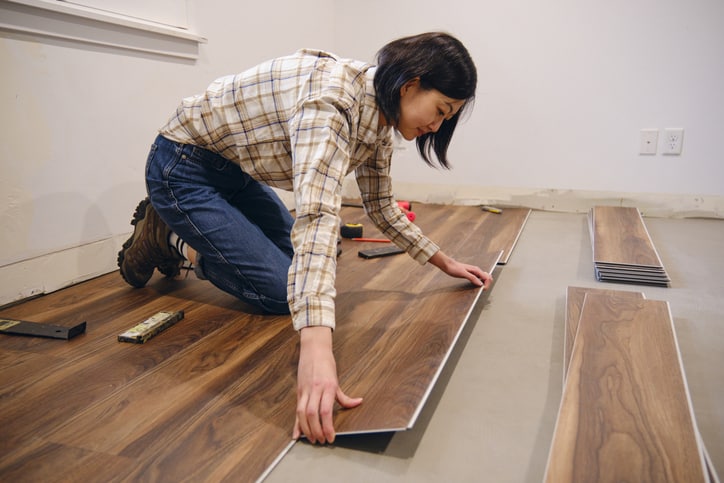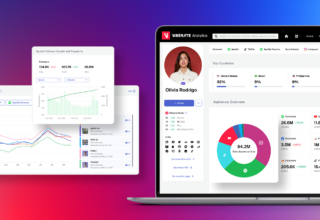
Property owners spend thousands on flooring upgrades every year, convinced they’re making smart investments. Sometimes they’re right. Other times, they’re just burning money on changes that won’t add a cent to their property’s actual market value.
The difference between a flooring upgrade that pays off and one that doesn’t comes down to understanding what buyers and tenants actually care about. It’s not always obvious, and the flooring industry doesn’t exactly go out of its way to clarify which projects are worth the cost.
Table of Contents
The Flooring Upgrades That Actually Move the Needle
Certain flooring changes genuinely increase what commercial properties can sell or lease for. These aren’t the flashiest options necessarily, but they address real concerns that affect a buyer’s willingness to pay more.
Replacing damaged or severely outdated flooring almost always adds value. When potential buyers walk into a space with stained carpets from 1995 or cracked tiles throughout the lobby, they immediately start calculating replacement costs. They’ll either negotiate the price down or walk away entirely. Getting ahead of this with quality materials removes a major negotiation obstacle and can easily recoup the investment.
Upgrading to more durable materials in high-traffic areas makes financial sense too. Switching from standard carpeting to commercial-grade options in lobbies, hallways, and reception areas reduces long-term maintenance costs. Buyers recognize this, especially if they’re looking at properties as rental investments where tenant turnover and wear matter. For spaces where brand identity plays a role, investing in custom carpets that incorporate company colors or logos can create a distinctive professional appearance that appeals to specific tenant types willing to pay premium rates.
Here’s something most people miss: flooring that improves accessibility adds real value. Installing slip-resistant surfaces, removing trip hazards, and ensuring ADA compliance aren’t just nice touches. They’re risk reducers. Properties with proper accessibility features face fewer liability concerns and appeal to a broader tenant pool, which directly affects occupancy rates and rental income.
When New Floors Are Just New Floors
Not every flooring upgrade translates to higher property values, no matter how expensive or attractive the materials might be.
Putting luxury materials in spaces where they don’t match the building’s overall positioning rarely pays off. Installing imported marble in a suburban office park where comparable properties have standard commercial tile won’t suddenly make the property worth 20% more. Buyers won’t pay a premium for flooring that’s out of sync with the neighborhood and typical tenant expectations.
The problem is especially obvious with trendy materials that might look dated in five years. That reclaimed wood flooring or bold geometric tile pattern might be popular right now, but commercial buyers think in longer time horizons. They’re often looking at 10 or 15-year holds, and they know they might need to replace anything too stylistically specific before it’s worn out just because it looks outdated.
Upgrading already-functional flooring just because it’s not brand new is usually a waste of money from a value perspective. If the existing floors are clean, undamaged, and appropriate for the space’s use, replacing them won’t increase what informed buyers are willing to pay. They understand that functional flooring has remaining useful life, and they’re not going to hand over extra money for aesthetic preferences.
The Timing Factor Nobody Talks About
When flooring gets upgraded matters almost as much as what gets installed.
Replacing floors right before listing a property for sale can boost perceived value and help it move faster, but the actual return depends heavily on the local market. In a hot market where properties sell quickly anyway, expensive flooring upgrades might not be necessary. The next owner might have their own plans and preferences.
The timing sweet spot tends to be midway through a property hold, especially for rental properties. Upgrading at this point means the owner benefits from reduced maintenance costs and potentially higher rental rates for several years before selling. The floors still look relatively new when it comes time to sell, but the owner has captured some return through improved rental income.
Doing flooring work between tenants makes more sense than disrupting existing leases. The cost of lost rent during renovation often exceeds what the upgrade adds to property value. Some owners get this backwards and think they need to upgrade immediately, even if it means buying out a tenant’s lease or losing months of income.
What the Numbers Actually Show
Commercial real estate appraisers don’t just add the cost of flooring improvements directly to property value. They look at how upgrades affect rental income and comparable sales.
If a flooring upgrade allows an owner to charge $2 more per square foot annually, that translates to increased property value based on capitalization rates in the market. A property generating an extra $10,000 per year in rent might see a value increase of $100,000 or more, depending on cap rates. But that only works if tenants actually pay the higher rate and if the improvement genuinely justifies it.
Most flooring upgrades don’t create that kind of rental income boost unless they’re addressing a serious deficiency or significantly improving the space’s functionality. Cosmetic changes rarely move the financial needle enough to justify their cost purely from a property value perspective.
Making Smarter Flooring Decisions
The key is matching flooring decisions to actual goals. If the goal is maximizing resale value, focus on addressing obvious problems and bringing substandard areas up to market expectations. Anything beyond that should be evaluated skeptically.
For properties being held long-term, prioritize durability and maintenance costs over aesthetics. Floors that last longer and require less frequent replacement will save more money than ones that look slightly nicer initially but need attention every few years.
The properties that genuinely benefit from premium flooring are those where the target tenant base expects it and will pay accordingly. Class A office buildings, upscale retail spaces, and luxury residential buildings can justify higher-end materials because their tenant pools have different expectations and budgets.
Most commercial properties fall somewhere in the middle, where solid, appropriate flooring serves the purpose without trying to impress anyone. That’s usually where the best value lies—not in the cheapest option available, but not in the most expensive either. Just something that works well, lasts reasonably long, and doesn’t give potential buyers or tenants a reason to negotiate the price down.














